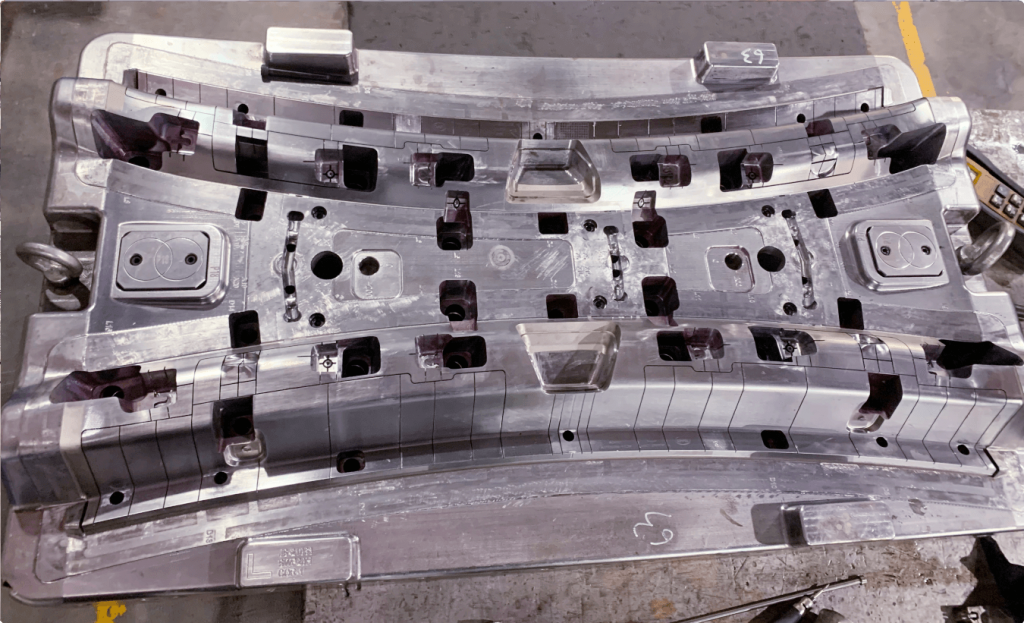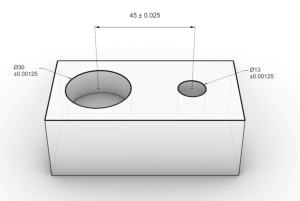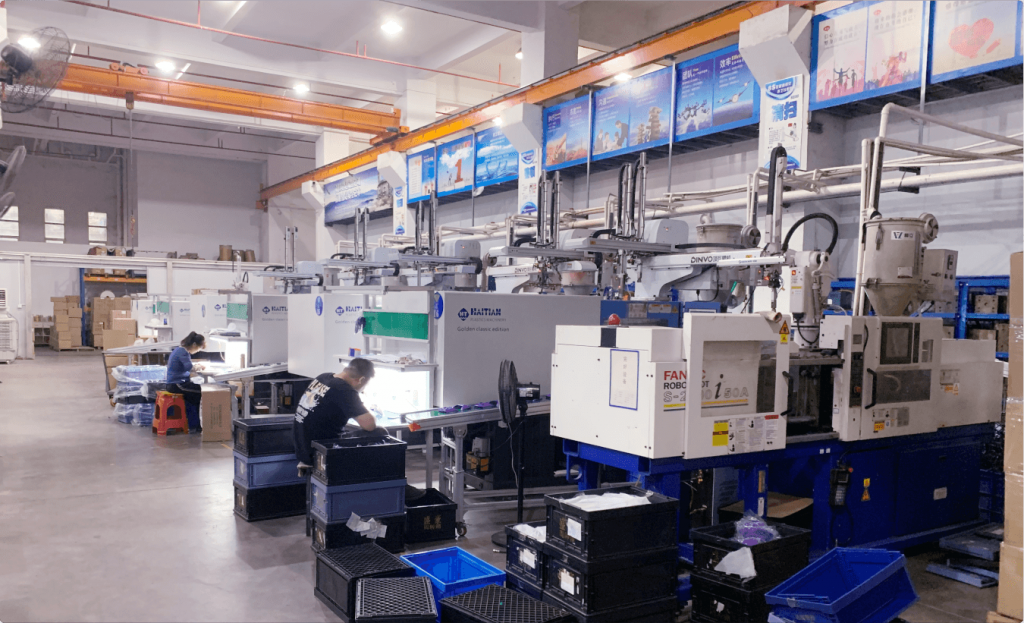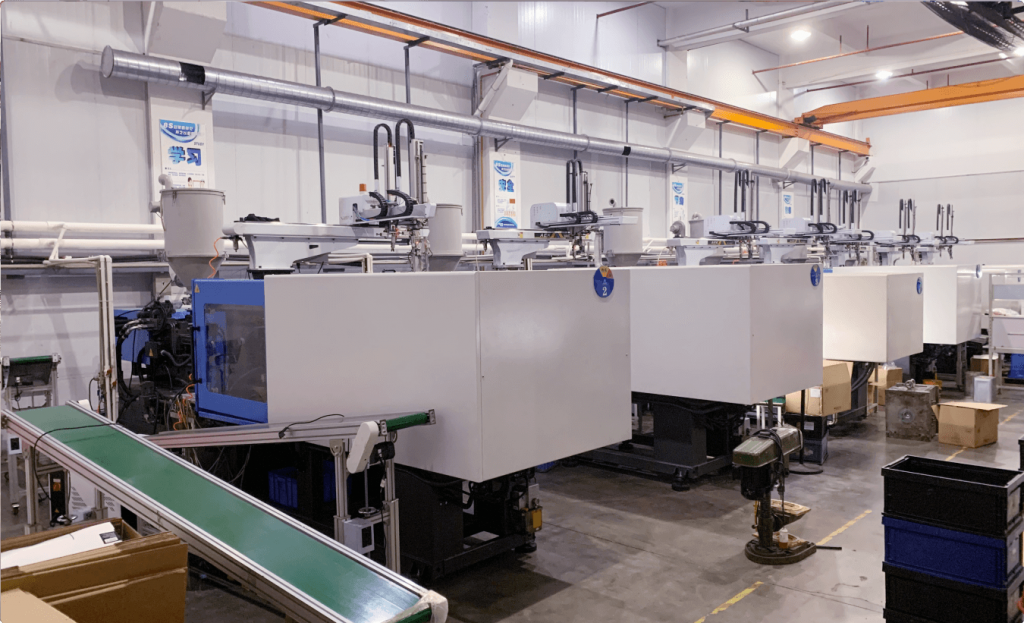Plastic products at both consumer and industrial levels are now produced with high quality and improved diversification. Manufacturers, thus, aim to use high-grade mold and the best suitable mold polishing process. This is due to the direct involvement of mold in enhancing product quality, giving rise to its necessity for mold polishing of plastic injection.
With the help of advanced mold tools, mold polishing helps to fill the cores and cavities to give the required smooth surface. As this is one of the last steps, many manufacturers try to avoid this step. However, plastic mold polishing plays an important role in improving the mold’s quality. This article discusses the concept and best practices related to plastic mold polishing processes.
What is Plastic Injection Mold Polishing Technique?
Plastic injection mold polishing refers to a technique in which plastic material is polished to gain smoother mold surfaces. The mold’s convex parts are removed using plastic cutting and deformation techniques. In these techniques, different tools such as sandpaper, wool wheels, and whetstone strips are used.
Manufacturers related to mold polishing believe that, for materials that require a high-grade surface finish, they need to make use of super-precision polishing methods. In these methods, special tools for mold polishing are used to tightly press the abrasive-containing liquids on the surface of the workpiece at a higher speed. With this technology, Ra 0.008 micrometer of surface roughness can be obtained.
The surface finish obtained through mold polishing for plastic materials differs from the surface finish process in other industries. It is technically known as “mirror processing” or “mirror finishing.” Its geometric accuracy, smoothness, and polishing process have set high standards in the polishing surface finish. Different standard levels involved in mirror polishing are A0 = Ra 0.008 micrometer, A1 = Ra 0.016 micrometer, A3 = Ra 0.032 micrometer, and A4 = Ra 0.063 micrometer. It might be challenging to accurately control the geometric precision of different parts through fluid polishing and electrolytic polishing. Further, the obtained surface quality through magnetic polishing, ultrasonic polishing, and chemical polishing may not meet the requirements. Thus, the mirror processing of molds is usually dominated by mechanical polishing.
Why Plastic Injection Mold Polishing Techniques?
Mold polishing is an important part of the manufacturing process for molding plastic materials. It affects the quality of the material considered as well as mold.
There are two major purposes of plastic injection mold polishing. First, the polishing helps in the smooth and easy removal of the material. Second, molders having a mold with a smoother surface finish can help in removing and demolding different plastic materials. So, polishing the mold prevents plastic from sticking to the used mold, further preventing any plastic injection molding defects.
Also, the smooth surface of the mold can help to improve the workpiece dimensions. Furthermore, it further improves the corrosion resistance and reduces the wear and tear of the material surface. At the same time, the time of an injection cycle can also get reduced by opting the effective plastic injection molding techniques.
Why Plastic Injection Mold Polishing Techniques?

Different kinds of Plastic Injection Mold Polishing Processes
#1. Chemical Mold Polishing
The plastic material is soaked in a chemical solution in chemical mold polishing. It enables the splitting up of micro-projections on the plastic surface. This process ensures a smooth workpiece surface by dissolving the dents. It is an effective method for molding materials having complicated shapes. Further, manufacturers can simultaneously work on different workpieces with higher efficiency. It provides a surface roughness of around Ra 10 micrometer.
#2. Magnetic Mold Polishing
Magnetic mold polishing makes use of magnetic abrasive for creating a brush within a magnetic field. It is an easy-to-control technique that grinds the workpieces smoothly to give an excellent finish. It provides not only great quality of the final workpiece but also ensures high processing efficiency. The roughness of the surface around Ra 0.1 micrometer can be achieved using suitable abrasives.
#3. Fluid Mold Polishing
Fluid mold publishing uses the concept of a flowing field that carries abrasive particles such as silicon carbide powder. These particles erode the surface of the workpiece. Hydrodynamic grinding is done using hydraulics, and the polymeric substance is allowed to flow at low pressure. This is usually incorporated into an abrasive made of silicon carbide powder.
#4. Electrolytic Mold Polishing
Electrolytic polishing is based on the principles of chemical mold polishing. It dissolves the surface of the workpiece selectively for giving a smooth and glossy finish. In addition, due to its electrolyte process, cathode reaction influence can be eliminated for providing more significant results.
#5. Mechanical Mold Polishing
Mechanical mold polishing, considered to be the main mold polishing process, is a kind of polishing process that is manually performed. In this process, protruding or convex parts of the surface of the workpiece are removed for getting a smooth finish. Some of the basic materials that are used include wool wheels, sandpaper, oilstones, etc. When high surface operations are required, an ultra-precision lapping and polishing technique is used. In this technique, special-purpose molding tools such as abrasives are pressed on the surface of the workpiece for high-speed rotation. Through mechanical mold polishing, a rough surface of Ra 0.008 micrometer is obtained that is considered as the best polishing value. It is usually applied to the optical lens mold polishing.
#6. Ultrasonic Mold Polishing
Ultrasonic mold polishing is a process in which abrasive suspension is used to polish hard and brittle materials. The plastic material is first placed in an ultrasonic field, after which it is allowed to soak in the abrasive suspension. This suspension uses ultrasonic waves to grind and polish the surface of the workpiece. Since the macroscopic force is small, ultrasonic polishing doesn’t cause workpiece deformation.
#7. EDM-Ultrasonic Polishing
With the EDM-ultrasonic mold polishing process, the surface roughness of around Ra 1.6 micrometer or more can be obtained. In this process, compound polishing is obtained by combining ultrasonic waves with high-frequency, high-peak values and a narrow-pulse power source. Further, electric pulse corrosion and ultrasonic vibration are combined simultaneously and worked upon the workpiece’s surface. This helps to reduce the roughness of the surface after machining it through cutting, milling, wire cutting, and EDM. It effectively polishes the rough surface of the mold.
Considerations for Plastic Injection Mold Polishing
While indulging in the plastic injection mold polishing process, there are various points that need to be considered. Some of them include:
#1. Material
Different plastic materials tend to differ in the smoothness of their surface. While some can produce glossier surfaces, some might result in giving roughly polished surfaces. Materials such as impact styrene, ABS, and polypropylene are strong yet flexible plastics and can result in preparing roughly polished surfaces during mold polishing processes. The lightly blasted mold polishing process works better for polyurethanes, polyvinyl chlorides, polyethylene, and some thermoplastic elastomers. On the other hand, the draw polishing technique is best for brittle and rigid materials such as acrylics that cannot tolerate rough finishing. Comparatively, polystyrene tends to produce a shinier appearance, unlike low-density polyethylene. Thus, it is important to apply a suitable technique of mold finishing on the appropriate plastic material.
#2. Molding Process
In the molding process, shrinkage takes place when the plastic material starts to cool down. Due to this shrinkage, parts are pulled away from the cavity towards the core, increasing the overall grip. Further, high demolding force is needed for ejecting the plastic material from the core. When mold surfaces are smoothly polished, cycle time and ejection forces reduce significantly. Also, mold polishing and draft angle for injection molding take place simultaneously.
When the sidewalls of the parts are drafted, the force needed to push the material towards the core is reduced, and the material readily gets pulled off the cavity. At the same time, there are various plastic parts whose functional requirements don’t need draft angles. In these cases, plastic injection mold polishing is preferred. Thus, before proceeding towards mold polishing, it is necessary to check polishing requirements, specifically for those which need negligible draft angles.
#3. Molding Cost
The mold polishing process works step-by-step, from coarse polishing to finer polishing. When the finish required is of high grade, steps involved in the process increase, increasing total cost. For instance, parts of transparent injection mold require a high grade of polishing on both core and cavity. This results in an increased price. Some experts suggest that mold polish involves around 10% of the overall mold cost. Since this may differ among companies, it is important to consider molding costs before indulging in plastic injection mold polishing techniques.
#3. Molding Cost
The mold polishing process works step-by-step, from coarse polishing to finer polishing. When the finish required is of high grade, steps involved in the process increase, increasing total cost. For instance, parts of transparent injection mold require a high grade of polishing on both core and cavity. This results in an increased price. Some experts suggest that mold polish involves around 10% of the overall mold cost. Since this may differ among companies, it is important to consider molding costs before indulging in plastic injection mold polishing techniques.
SPI guidelines for Mold Polishing Process
SPI or the Society of Plastics Industry has set different industry standards for surface finish. Total 12 grades of surface finishes are grouped into 4 categories ranging from a smooth and glossy finish to a textured finish.
For plastic injection molding companies, SPI has set A1, A2, and A3 grades for a smooth and glossy finish. For the semi-glossy finish, which is one step below, the grades B1, B2, and B3 have been allotted. While grades for matte finish are C1, C2, and C3, the grades for textured finish are classified as D1, D2, and D3. Each of these grades differs in its typical finishes and surface roughness.
Tips for Plastic Injection Mold Polishing
Since plastic injection mold polishing is an important part of plastic manufacturing, it is important to choose the right technique for the right material. Here are some of the tips that can help to smoothly conduct the plastic injection mold polishing process:
- Before starting to machine a cavity, it is necessary to ensure that the surface of the workpiece is dirt-free. If there is any dirt, you need to clean it with solvents such as kerosene. This will help to carry out the process of oilstone cutting correctly.
- A rough surface may be more difficult to polish rather than easy ones, specifically dead corners. Thus, it is advised to start grinding the deep bottom parts and then move to the different sides of the workpiece, gradually moving onto the flat surface.
- Polishing different components of the workpiece separately is better than polishing the assembled workpiece. It is because grinding the EDM pattern or rough texture of the components of the workpiece separately helps in easily smoothening the whole workpiece.
- Oilstone should be used for polishing rough scratches on workpieces that have large sides or flat surfaces. Simultaneously, unevenness and undercuts having straightened steel sheets should be monitored. Thus, you can easily release different parts of the workpiece while preventing any damage.
- As a protective or preventive measure, you can attach a saw blade or sandpaper to the edges of the surface that comes in direct contact or undercuts caused due to mold part grinding.
- Plastic injection mold polishing can be best done with a horizontal oilstone handle. If the slopes are too large, the workpiece would feel a great force resulting in rough lines.
- When the process of mold polishing takes place with copper- or bamboo-pressed sandpaper, the area of the mold tool should be kept larger compared to the considered sandpaper.
- The tools taken for mold polishing should have a similar shape as that of mold to ensure that no deformation takes place while the workpiece is being polished.
- Sander should be avoided for repairing the parting surface as the parting surface may turn out to be rough when polished with the help of the wheel head. Thus, the wheel head should be adjusted according to the concentric balance when required.
Tips for Plastic Injection Mold Polishing
The quality of the mold is crucial with respect to the quality of different injection molded parts of the workpiece surface. Therefore, plastic injection mold polishing proves to be an excellent source of improving the dimensional stability of molded parts, ensuring the high quality and service life of the overall product. Selecting a suitable mold polishing process incorporated with technology is important. Thus, the above-mentioned tips along with considerations required are mentioned to get effective results of plastic injection mold polishing.
To know more about injection molding services:
Categories
Share On
Recent Post

CNC Machining Design Guide
CNC machining—short for computer numerical control machining—turns a digital CAD model into

CNC Machining Guide Explained
Computer Numerical Control (CNC machining) is a cornerstone of modern



